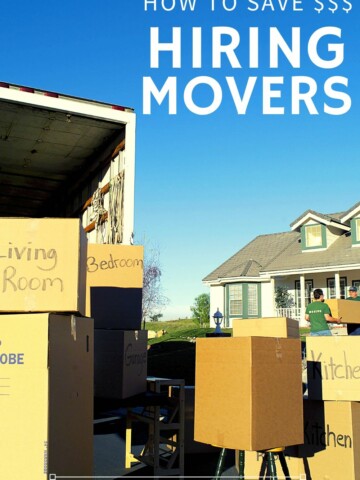Moving house? Movers will NOT move plants! So, you will need to move them yourself. Here are our best tips for how to pack houseplants for moving!
When planning our move, we knew we were going to hire movers (hello, 38 weeks pregnant and wrangling a one year old!) However, we didn't originally consider that there are certain things that movers will not move.
One of those things? Is potted plants!
Movers are generally risk-adverse and don't like to move anything super fragile. Because there are big risks of breaking or damaging plants, they usually won't touch them.
So, if you have plants to move - you're on your own!
We had several companies offer to have their employees carry them to our personal vehicles, but none wanted to transport them in their trucks.
So, we did some research on how to move potted plants and decided to figure out the easiest and safest way to transport them ourselves.
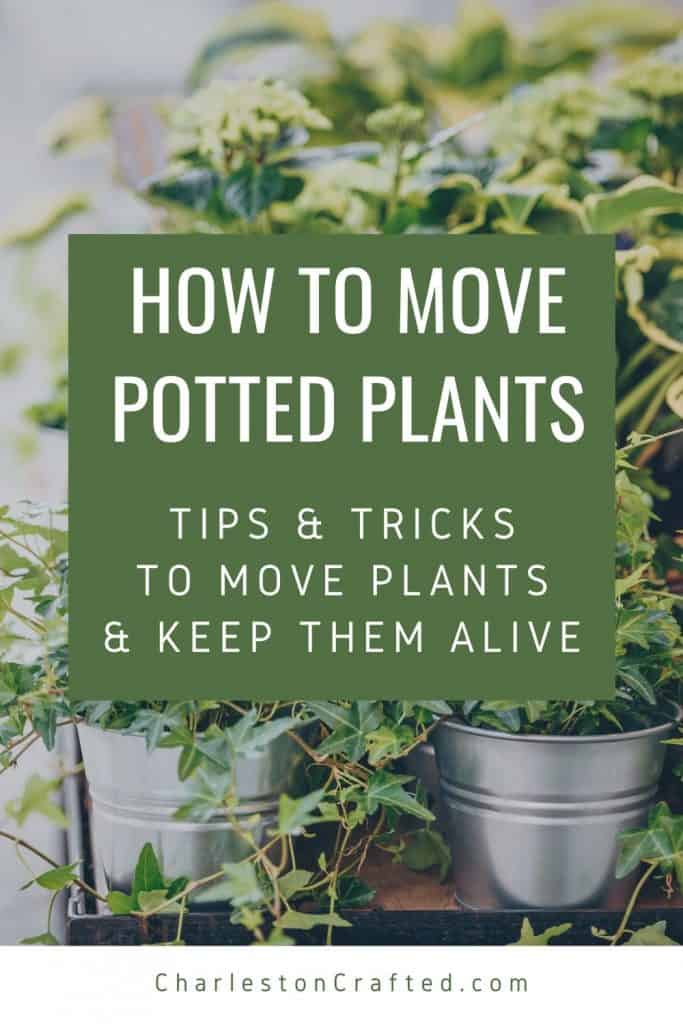
How to move houseplants
Moving potted plants to a new home can be stressful. But, if you make a plan and work with care, your plants will most likely be totally fine.
Moving houseplants basically falls into two phases:
- How to pack plants
- How to actually move plants
How to pack potted plants
Whether you are moving a short or long distance, it is crucial to prep and pack them properly to give yourself the best odds of success.
Repotting fragile pots
If you have plants planted in fragile ceramic pots, you might want to re-pot them in plastic pots to prevent breakage.
I personally keep a lot of my plants in plastic post nested inside ceramic, so I simply slid them out and moved them in the liner pots.
If you decide to do this, do any repotting a few weeks before you move to prevent shocking the plants (any more than the move already will!)
Then, wrap your ceramic pots in bubble wrap or as appropriate and pack them in a moving box as you would any other fragile items.
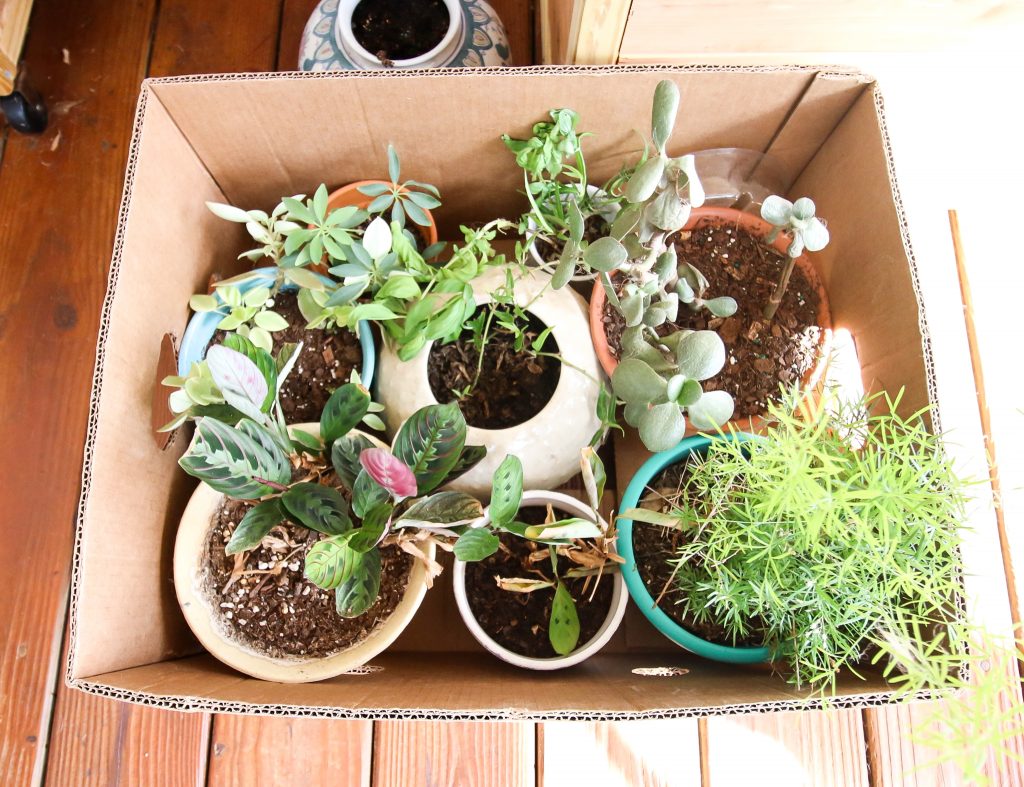
Watering your plants
Water your plants 2-3 days before your move. This way they are not too wet or soggy, but also not dried out and stressed.
Of course, adjust this to match the plant care for your specific needs. My giant cactus, for example, only gets watered once a month, so I would not water it special just for this move.
Packing potted plants
There are a few ways to pack your potted plants to get them ready for your move.
- Place the pot inside a plastic bag such as a grocery bag. Pull the bag up so it covers the potting soil and can't spill. Secure with rubber bands or twine.
- Place your pots in a heavy duty cardboard box. We really like the tray-style boxes with handles in them that you can get from the Costco produce department.
- Fill any space between pots with packing material like newspaper.
- If you decide to use a closed box with a lid, use scissors to stab holes into the cardboard to allow for air flow.
- If others will be helping, label your boxes as LIVE PLANTS and FRAGILE just so there is no confusion.
Another alternative to a box for local plant moves is a laundry basket! They are often plastic, which is easy to clean, and have handles, making them easy to carry.
How to pack tiny pots
Pack tiny pots the same way as big pots! I love using a cake pan to hold really small pots - like for succulents.
Just wrap each one in paper and then make sure there's no wiggle room!
You can also use a wine bottle case - they have separators for bottles that make them great for separating small pots!
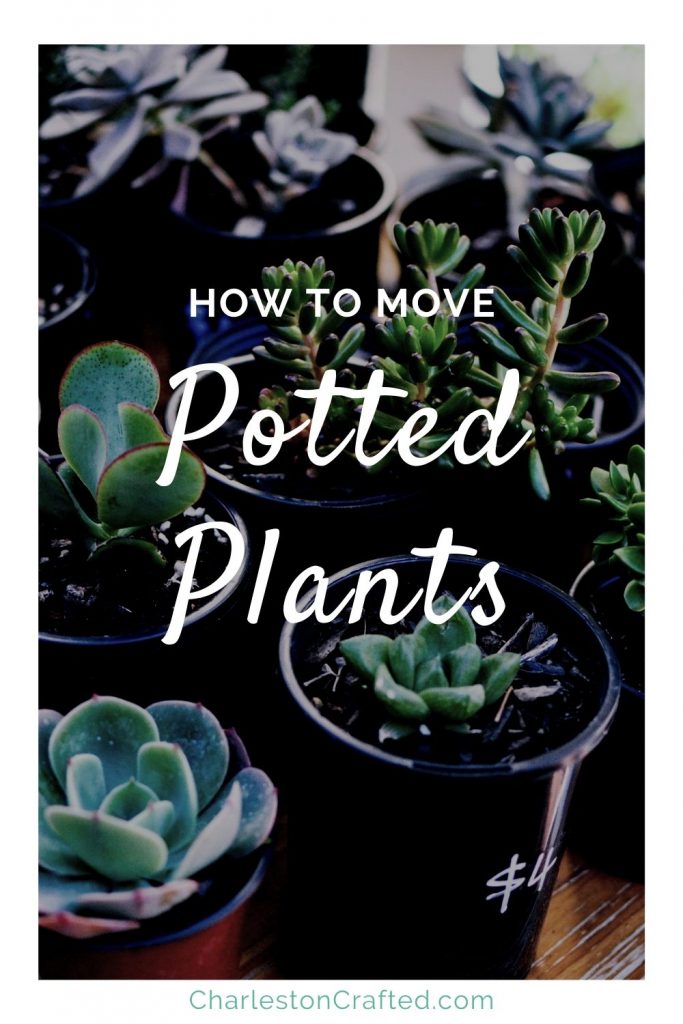
How to move potted plants
If you are using a moving company, you will most likely not be allowed to put your plants on the moving truck.
So, you will need to transport them in your own car.
How to transport potted plants in your car
The easiest and cheapest way to move potted plants is in your personal car.
Don't put plants in the trunk of a sedan type car - they get baking hot and you can't keep an eye on your plants!
Place the boxed plants in the cabin of your car in a secure spot. If you leave the car and it is hot outside, crack a window.
If you stop to stay somewhere over night, bring your plants inside with you.
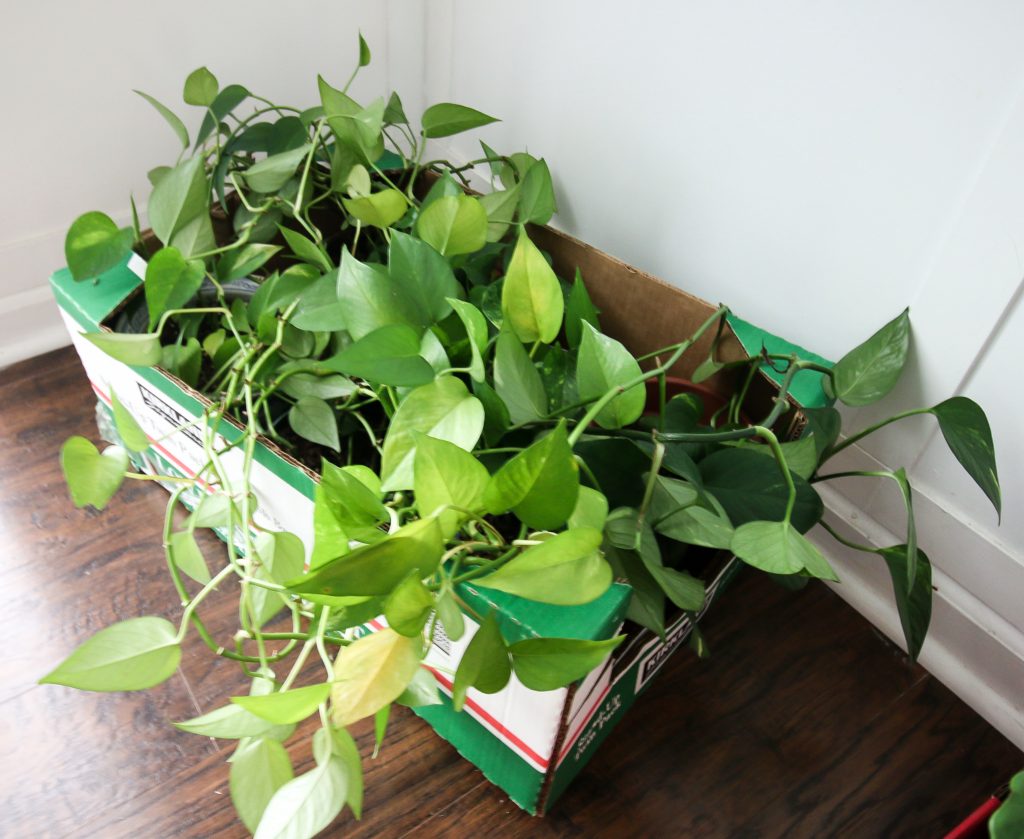
How to move large potted plants
For larger potted plants, you can add sphagnum moss (peat moss) on top of the potting mix.
This moss helps hold moisture in and protects the soil from sloshing around and making a mess of your car.
Moving potted plants on an airplane
Flying? You might be able to take your favorite plant as a carry on. Make sure you comply with TSA guidelines and call your specific airline to verify, first.
Live plants are not usually allowed on international flights.
Sending plants in the mail
You can send houseplants via USPS, UPS and FedEx.
You will need to pack them extra-securely in sealed cardboard boxes. Remember that the box may go sideways or upside down, so secure the soil with plastic bags accordingly.
If you are shipping your plants during extreme weather, look for insulated packaging and plan accordingly.
In all cases, try to avoid shipping plants over a weekend, when they are more likely to sit and wait during off-hours.
Do I need to wrap my tree?
Some people prefer to wrap their large plants in brown paper or a mesh plant sleeve for moves.
This is not necessary and will not keep a plant from getting smushed if something lands on it, but it can help to contain any lost leaves or debris and keep your car or truck cleaner.
If a plant is particularly bushy or branchy, wrapping it in a bedsheet or plant sleeve can help to protect delicate limbs from snapping.
Be prepared for spills
Spills happen. Have paper towels and other cleaning supplies on hand, just in case.
Lay down newspaper or a similar covering if you are very worried about the upholstery in your car.
Moving plants in the Winter
If you are moving your houseplants in the Winter and it is very cold outside, prepare them accordingly.
Wrap each pot in an insulating material like newspaper before packing it into your box or tray.
Never leave a box of plants outside in a cut off car in extreme temperatures.
Once you get to your new home
Unpack your plants ASAP. Get them air and sun and water!
Take a pair of clippers and remove any dead or damaged leaves and branches.
Know that your plants might not be happy for a while. Give them some time to adjust!
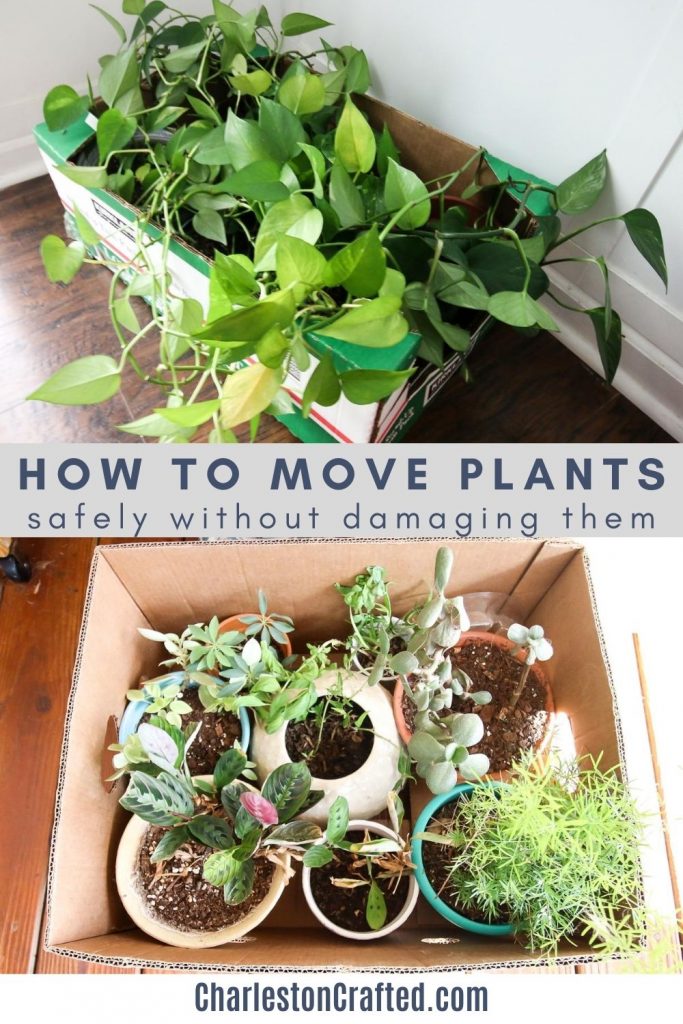
Frequently Asked Questions
What do I need to know when moving houseplants across state lines?
Long distance moves are very different from local moves.
The United States Department of Agriculture (USDA), among other federal agencies, has a lot of laws in place about what plants can move across state lines.
Also, if you are moving a long distance, you probably don't want to make multiple trips in your car. Only you can decide what valuable space you want to use for plants in the car.
Your best bet may be to sell some of your plants before you leave. More common household plants are easier to replace than older or rarer plants.
Also keep in mind the space constraints and growing conditions of your new home. If you don't have a good place for your plants to grow, it might be easier to sell them instead of moving them a long distance.
Here are my tips for selling things on Facebook Marketplace.
Do moving companies move plants?
No - in my experience, no moving companies would move house plants.
Many will move them to your vehicle but will not drive them in the truck.
How do I move a large potted tree?
If a plant is too tall to fit in your car, consider lying it sideways with the seats laid down. If it still won't fit, and it cannot go on the moving truck, your best bet is going to be to sell the tree and not move it. Sorry!
Can I leave plants in the car over night?
Treat your plants like a pet. If you wouldn't leave your dog in the car over night or in extreme temperatures, don't do it to a plant either.
Want to show your houseplants some love?!
--> How to clean plant leaves
--> How to propagate a plant (free eBook!)
--> When to repot a plant
--> Rotating houseplants
--> When to cut leaves off of plants
Looking for something?
We've been doing this since 2012 so we have a LOT of blog posts!
Search stuff like: Ceiling Projects | DIY Plant Stands | Thrift Flips


Hello, I'm Morgan, half of the creative force behind CharlestonCrafted.com! With a passion for DIY that dates back to 2012, I've transformed three homes and now I'm dedicated to helping others craft their dream spaces. Let's turn your house into a home together!


